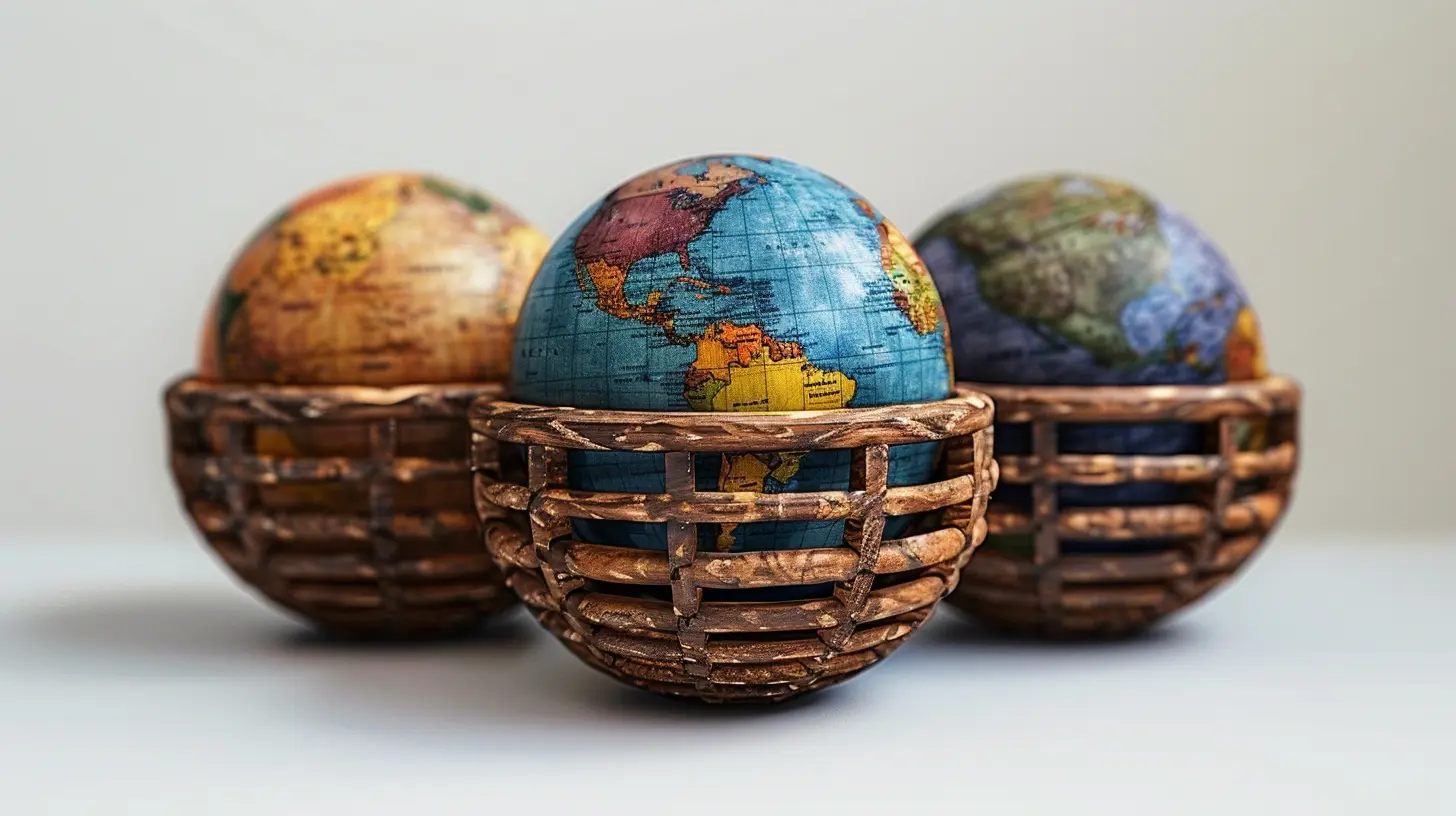Global Asset Allocation: Navigating International Markets
9 August 2025
Investing is like planning a road trip. You wouldn’t just stick to one route, right? You’d explore different highways, scenic byways, and detours to make the most of the journey. The same logic applies to global asset allocation.
By diversifying across international markets, you spread risks, tap into emerging opportunities, and enhance potential returns. But navigating the global financial landscape isn’t as simple as picking a few foreign stocks and calling it a day. It requires a strategy, market awareness, and a solid understanding of economic trends worldwide.
So, how do you go about it? Buckle up as we dive into the fundamentals of global asset allocation and how to make smart investment decisions across borders. 
What Is Global Asset Allocation?
At its core, global asset allocation involves spreading investments across different asset classes, sectors, and geographical regions. Instead of putting all your capital into one market—like the U.S. stock exchange—you distribute it across global equities, bonds, real estate, and even commodities.The goal? Reduce risk and maximize returns by capitalizing on various market dynamics. After all, when one region’s economy is struggling, another might be thriving. Diversification helps smooth out the bumps. 
Why Go Global With Your Investments?
If you're wondering why you should even bother looking beyond your home country, here are a few compelling reasons:1. Diversification Reduces Risk
Investing solely in your home country exposes you to localized market risks. A major political event, economic downturn, or financial crisis could wipe out a significant chunk of your portfolio. By diversifying globally, you’re not putting all your eggs in one basket.2. Access to High-Growth Markets
Emerging markets like India, Brazil, and China have explosive growth potential compared to mature economies. While they come with higher volatility, they can also offer significant long-term rewards.3. Currency Hedging Opportunities
Foreign investments expose you to different currencies. While currency fluctuations can be risky, they can also work in your favor. A depreciating home currency can increase the value of your international assets, giving you an extra financial cushion.4. Broader Investment Choices
Why limit yourself to domestic stocks when you can invest in cutting-edge tech firms in Silicon Valley, European luxury brands, or Asia’s booming real estate market? A global portfolio opens up a world of opportunities—literally.
Key Components of a Global Asset Allocation Strategy
Now, let's talk strategy. A well-balanced global investment portfolio doesn’t happen by chance. It requires careful planning and strategic allocation across different asset classes. Let’s break it down.1. Equities (Stocks)
Stocks represent ownership in a company. Global equities are a major component of asset allocation because they historically offer higher returns compared to bonds or real estate.- Developed Markets: These include the U.S., Europe, Japan, and other advanced economies. They're relatively stable but may not offer the highest growth.
- Emerging Markets: Countries like India, Brazil, and China. Risky? Yes. But they also offer significant upside potential.
2. Fixed Income (Bonds)
Bonds provide stable income and act as a defensive asset in uncertain times.- Government Bonds: Low-risk investments issued by stable economies such as U.S. Treasury bonds or German Bunds.
- Corporate Bonds: Issued by companies to raise capital. Higher risk but potentially higher returns.
3. Real Estate
Investing in global real estate—either through direct property purchases or Real Estate Investment Trusts (REITs)—provides investment stability and passive income. Think rental yields in London or commercial properties in Singapore.4. Commodities
Gold, silver, oil, or agricultural products can be a hedge against inflation and economic downturns. Commodities often work inversely to stock markets, making them a valuable asset during market downturns.5. Alternative Investments
Private equity, hedge funds, or even cryptocurrencies fall into this category. They provide diversification and potential high returns but come with a fair share of risks.
Challenges of International Investing
While going global has clear benefits, it also comes with challenges. Let’s take a look at a few roadblocks you need to navigate.1. Currency Fluctuations
The value of your international investments can change due to currency movements. A strong U.S. dollar, for example, can reduce the value of foreign assets when converted back.2. Political and Economic Risks
Different countries have different levels of stability. Geopolitical tensions, policy changes, or economic crashes can affect your holdings overnight.3. Regulatory Differences
Each country has its own set of financial regulations. Investing internationally often means learning about different tax laws, accounting practices, and market rules.4. Market Volatility
Emerging markets, while lucrative, can be notoriously volatile. One bad piece of news can lead to market swings that would make even seasoned investors sweat.How to Build a Global Investment Portfolio
Alright, let’s get practical. Here’s how you can start structuring your global asset allocation game plan:1. Assess Your Risk Tolerance
Before you start picking global assets, determine how much risk you're comfortable with. Younger investors might lean toward stocks in emerging markets, while those nearing retirement may prefer a heavier allocation in bonds and stable assets.2. Determine Your Investment Goals
Are you investing for long-term growth, income generation, or capital preservation? Your goals will shape your investment choices.3. Select Asset Classes Wisely
Decide what portion of your portfolio will go into equities, bonds, real estate, and alternative investments. Diversification is your best friend.4. Use Exchange-Traded Funds (ETFs) and Mutual Funds
Not sure where to start? Global ETFs and mutual funds provide instant exposure to international markets without the hassle of researching individual stocks. They’re cost-effective and relatively easy to manage.5. Monitor and Rebalance Regularly
Markets change, and so should your portfolio. Regularly review your asset allocation and rebalance if necessary. If one asset class is outperforming, don't be afraid to take some profits and redistribute elsewhere.Final Thoughts
Investing beyond your borders isn’t just for the ultra-wealthy or financial experts—it’s a smart move for anyone looking to build long-term wealth. While it requires careful planning, risk management, and continual monitoring, global asset allocation can provide stability, diversification, and enhanced returns.So, whether you’re an ambitious beginner or a seasoned investor, it's time to think beyond domestic markets. After all, the world is your investment playground!
all images in this post were generated using AI tools
Category:
Asset AllocationAuthor:

Yasmin McGee
Discussion
rate this article
1 comments
Nicholas McGrady
Global asset allocation is not just about diversifying; it's about seizing opportunities worldwide. Embrace risk, think beyond borders, and recognize that true wealth lies in navigating the complexities of international markets. Don't settle—invest globally, think boldly.
August 31, 2025 at 10:48 AM

Yasmin McGee
Thank you for your insightful comment! I completely agree that global asset allocation is essential for recognizing opportunities and embracing risk across international markets. It's all about bold thinking and strategic diversification.


